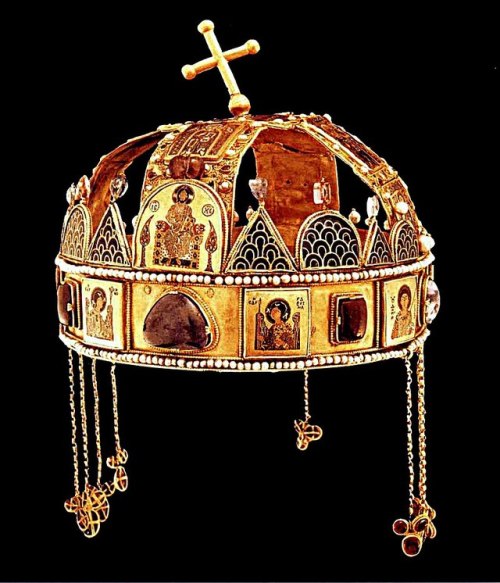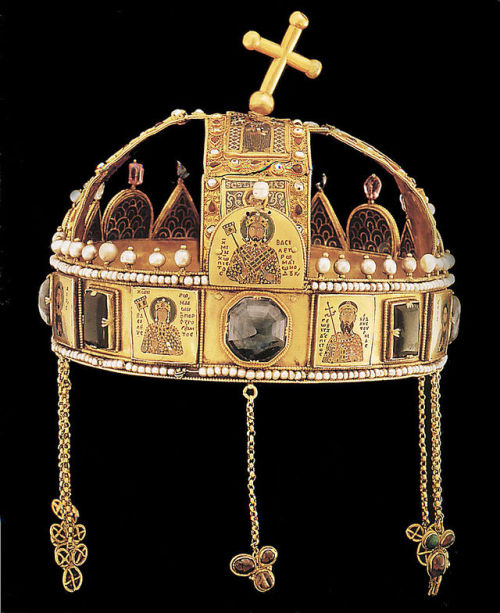The Holy Crown of Hungary (Hungarian: Szent Korona, also known as the Crown of Saint Stephen) was th
The Holy Crown of Hungary (Hungarian: Szent Korona, also known as the Crown of Saint Stephen) was the coronation crown used by the Kingdom of Hungary for most of its existence; kings have been crowned with it since the twelfth century. The Crown was bound to the Lands of the Hungarian Crown (sometimes the Sacra Corona meant the Land, the Carpathian Basin, but it also meant the coronation body, too). No king of Hungary was regarded as having been truly legitimate without being crowned with it. In the history of Hungary, more than fifty kings were crowned with it, up to the last, Charles IV, in 1916 (the only kings who were not so crowned were John II Sigismund, Gabriel Bethlen and Joseph II).The enamels on the crown are mainly or entirely Byzantine work, presumed to have been made in Constantinople in the 1070s. The crown was presented by the Byzantine Emperor Michael VII Doukas to King Géza I of Hungary; both are depicted and named in Greek on enamel plaques in the lower crown. It is one of the two known Byzantine crowns to survive, the other being the slightly earlier Monomachus Crown, which is also in Budapest, in the Hungarian National Museum.During the 14th century, royal power came to be represented not simply by a crown, but by just one specific object: the Holy Crown. This also meant that the Kingdom of Hungary was a special state: they were not looking for a crown to inaugurate a king, but rather, they were looking for a king for the crown.The cross was knocked crooked in the 17th century when the crown was damaged, possibly by the top of the iron chest housing the insignia being hastily closed without the crown having been placed in it properly. The cross has since been left in this slanted position, and is now typically depicted as such (see image below, the Coat of Arms of Hungary, with the Crown on top). -- source link
Tumblr Blog : sartorialadventure.tumblr.com
#fashion#eastern europe#crowns

